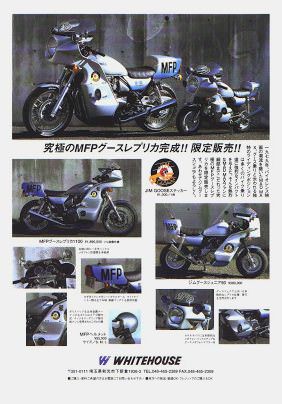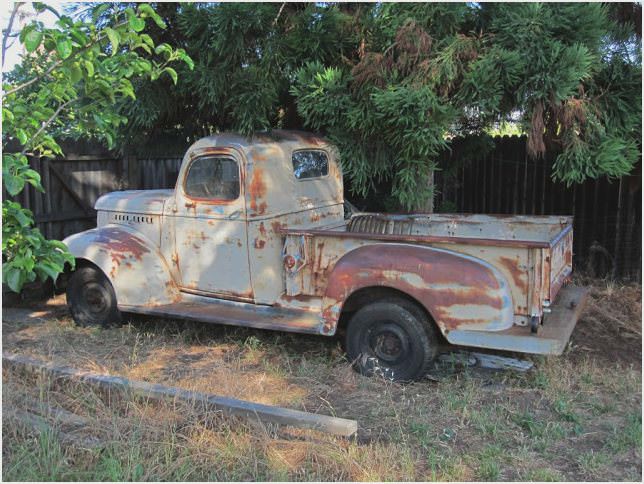
Related Content
Motorcycle Poll: Which classic single-cylinder thumper would you buy?
Oh for the days of the classic thumper. Time was when all the great British marques had something to.
Lane Pipkin’s Suzuki GT750 LeMans
Lane Pipkin discusses owning and riding his Suzuki GT750 LeMans.
Found on eBay: 1978 Honda CB750F Super Sport
This week’s eBay find may not be the rarest bike we’ve featured here, but with another round of fres.
Onboard with Dave Roper at the Isle of Man
Honda CBX
Years produced: 1979-82
Total production: 40,000
Claimed power: 103bhp @ 9,000rpm
Top speed: 140mph
Engine type: Four-stroke, in-line six-cylinder, four overhead cams
Weight (wet): 272kg (600lb)
Price then: $3,988
Price now: $3,900-$6,500
Call it six appeal, this enduring ability of the Honda CBX to draw a look of wonder, puzzlement, awe and amusement rolled into one. Dave Ditner has seen it countless times since he started riding the CBX, the six-cylinder package of engineering wizardry that Honda rolled out in the late 1970s. And while bike technology has blown by the CBX like a line drive by Charlie Brown over the last quarter century, the old flagship hasn’t lost a step when it comes to getting attention.
You’ll go to a bike night or a ride somewhere and see some kids looking out the back of a truck, says Ditner, a retired development engineer for Ford. They’ll start counting exhaust pipes, and their eyes go wide. That’s still fun.
There had never been anything quite like the CBX when it was introduced in 1978. Six cylinders. Six carburetors. Four overhead camshafts. Twenty-four valves.
Some bikes get good reviews; this one got praise somewhere north of heavenly.
Cycle called it magic and predicted it would be ranked with the rare and precious motorcycles which will never, ever be forgotten. Cycle Guide hailed it as the Vincent Black Shadow of 1979.
Ditner is among those whose face broke into the you-gotta-be-kidding-me expression when he first saw the CBX. I was at a Honda dealer getting parts for my kid’s dirt bike, and one of the owners took it out and went for a ride. I looked at the engine and went, ‘Holy …’
We’ll cut Ditner off there, but suffice it to say his exclamation didn’t end with the words moly or cow. Today, he owns nine CBXs and is as fascinated with the model as ever. There is nothing as smooth as that engine.
They’re one hell of a machine.
Making a statement
By the late Seventies, there was a growing sense among the motorcycle world that Honda had become conservative. The company’s marquee street bike, the four-cylinder Honda CB750. had been hailed as a wonderbike during the late 1960s but was growing old. Honda’s other offerings were reliable, dependable and well-engineered, but then again, the thinking went, so are most doorknobs.
With the CBX, Honda set out to blitzkrieg the competition. It assigned the design work to a new, competition-trained generation of engineers headed by 37-year-old Shoichiro Irimajiri, whose resume included creation of Honda’s 250cc and 297cc six-cylinder GP race engines.
The design team’s engine, which was developed in about 18 months, remains a masterpiece. Spanning 23.4in, it’s only 2in wider than the power plant of the CB750. The 33-degree forward angle of the cylinders, combined with a V-shaped manifold that angles all six carbs toward the centerline of the bike, maximizes legroom.
In its original form, the bike generated a claimed 103bhp while also boasting details such as forged-aluminum footpegs and magnesium components, a first for a production street bike.
Compared to the bikes of its era, virtually every aspect of the CBX oozes a gee-whiz quality. The alternator produces 350 watts, a huge dose of power for the day, and operates on a clutch to protect itself from the engine’s overwhelming torque. Despite the width of the engine and its pair of three-into-one exhausts, cornering clearance is outstanding.
The package was designed to shock and awe customers into buying the bike, and it worked — but only for a while.
No staying power
Reportedly, Honda sold 25,000 CBXs in 1979, the first full year of production, but sales dipped sharply in 1980.
Why? Ditner, the technical editor of the International CBX Owners Association’s member magazine, CBXpress . says early CBXs came out of the factory with the wrong ignition advance mechanism, which cut power to the range of 85bhp. Bikes such as the Yamaha XS1100 and the Kawasaki Z1-R blew away the CBX, and although the problem was later fixed, the damage was done.
People thought, ‘Why do I need all this extra crap — these extra cylinders and the extra weight — just to go slower?’ It hurt the bike real bad.
Jim Jordan loves the CBX these days, but he didn’t have much respect for them as a young man in the early Eighties. I had a couple of Kawasaki GPz1100s that had a lot of performance modifications, and I raced a couple of CBXs on the street and just smoked them, he says. I thought they were big pigs.

Others saw them as monsters to be avoided at all costs. Buyers without mechanical experience envisioned endless trips to service shops to adjust the six carbs and 24 valves. Others looked at the bulk of the engine and saw ambulances and emergency rooms.
They intimidated the hell out of some people, Ditner says.
By 1981, Honda transformed the CBX into a sport tourer in hopes of boosting sales. But after the 1982 year, it was all over.
Still turning heads
As Jordan grew older, he developed an acquaintanceship with a local mechanic who specialized in the CBX. The friendship led Jordan to a part-time job at the shop, which gave him a newfound appreciation for the bike.
I liked the way they sounded. I also liked the technology of six cylinders, 24 valves and four cams. The technology was pretty cool for 1979.
Jordan bought a CBX and, true to his roots, began modifying it with a new swing arm, wheels, engine mounts and a fork brace. Today, a bike he once dismissed as bloated plodder is his favorite ride.
With the updates I’ve done with the suspension and tires, it runs fantastic. I can ride on twisty roads with guys on much more modern bikes, and I don’t even push it. It just fits me very well. I can’t really ride a crotch rocket with the bent-over position, I can ride the old superbikes much better.
I like the simplicity of the air-cooling, and it’s easy for a backyard wrench like me to work on.
Contrary to concerns that cropped up early in the bike’s production run, Jordan isn’t the only CBX devotee who says the machines are easy to maintain. Greg Wassenberg, who has ridden a CB750 for more than 25 years and became a CBX owner in 2000, says the six-cylinder bike is no more difficult to keep in tune than the 750, Ditner says common sense is the key to CBX maintenance.
The carbs are a pain if you don’t keep them clean. To pull the carbs, you’ve got to drop the engine, and that’s kind of involved. But if you keep fresh fuel in them and keep them running every now and then, they’re fine.
Parts are easy to find, Ditner says, and there are plenty of aftermarket components that greatly enhance the bike. He suggests replacing the factory windshield on the ’81 and ’82 models and adding customized exhaust pipes.
The windshield isn’t worth a damn, because you ride right in an eddy and there’s a lot of helmet noise. And if you put on aftermarket pipes, that engine sounds like a Ferrari. It’s got this nice growl to it.
It’s like hearing God sing.
Star power
Wassenberg says the CBX offers a mix of performance, reliability and notoriety he hasn’t found in any other bike. A lot of people want to know if it’s a custom engine. Then, when you tell them that it was a production bike made by Honda, they’ll say, ‘I had no idea Honda made a bike like that.’
Ditner spent decades climbing Honda’s ladder, starting with a CB160 and progressing to a two-cylinder 350, a four-cylinder 500 and then a CB750F.
But from the first time he twisted the throttle on a CBX, he knew he’d reached the top. I started looking at getting one as a collector bike. But after I rode one, the 750 hasn’t been out of the garage but once since.
There is nothing as smooth as that engine. They’re one hell of a machine.
Read more about the motorcycles mentioned in this article:
- Honda PCX125 & PCX150 Motor Scooter Guide
- Honda VTR 250 With Neptune Exhaust DIY Reviews!
- Import of the Honda CB 1100: It’s yes for France (in 2013)! New Bikes Info
- Honda GL 1800 Gold Wing
- 2012 Honda Civic Hybrid – HybridCars.com

